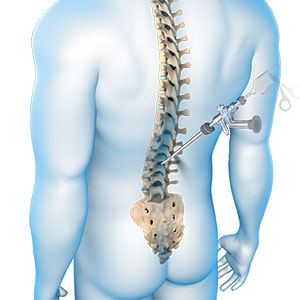Introduction
Minimally invasive spine fixation, also known as minimally invasive spine fusion or spinal instrumentation, is a surgical procedure used to stabilize and fuse the vertebrae in the spine. It is performed using specialized techniques and instruments that minimize damage to surrounding tissues and reduce the size of incisions compared to traditional open surgery. This approach aims to achieve spinal stability, alleviate pain, and improve overall spinal function.

How Minimally Invasive Spine Fixation Works
Minimally invasive spine fixation typically involves the following steps:
Anesthesia: Before the procedure, you will be given anesthesia to ensure your comfort and pain control during the surgery. The type of anesthesia used will depend on the specific procedure and your individual needs.
Incisions: Small incisions, usually less than an inch in length, are made in the skin near the affected area of the spine.
Dilators and Retractors: Specialized instruments, such as dilators and retractors, are used to gently separate the muscles and soft tissues surrounding the spine, creating a small working space.
Pedicle Screw Placement: Using fluoroscopic guidance or image guidance, screws are inserted into the pedicles (bony protrusions on the vertebrae). These screws provide stability and act as anchor points for the instrumentation.
Rod Placement: A connecting rod or rods are placed between the screws to provide additional stability and support to the spine.
Bone Grafting: To promote fusion, bone graft material may be placed between the vertebrae or within the disc space. This stimulates the growth of new bone, which eventually fuses the vertebrae together.
Closure: After the necessary fixation and fusion components are in place, the incisions are closed with sutures or adhesive strips.
Postoperative Recovery: You will be closely monitored in a recovery area to ensure your stability and comfort. Pain medications and other supportive measures will be provided as needed. The recovery period for minimally invasive spine fixation is typically shorter compared to traditional open surgery.
When Minimally Invasive Spine Fixation is Needed
Minimally invasive spine fixation may be recommended for various spinal conditions, including:
- Degenerative Disc Disease: When the discs between the vertebrae deteriorate, causing instability, pain, and nerve compression.
- Spinal Instability: When the spine is unstable due to fractures, spondylolisthesis (vertebral slippage), or other conditions.
- Scoliosis: In some cases of scoliosis, minimally invasive spine fixation can be used to correct spinal curvature and stabilize the spine.
- Spinal Tumors: Minimally invasive techniques can be used to stabilize the spine after the removal of spinal tumors.
- Failed Previous Spinal Surgery: In cases where previous spinal surgery has not provided adequate stability or has resulted in complications, minimally invasive spine fixation may be considered.







